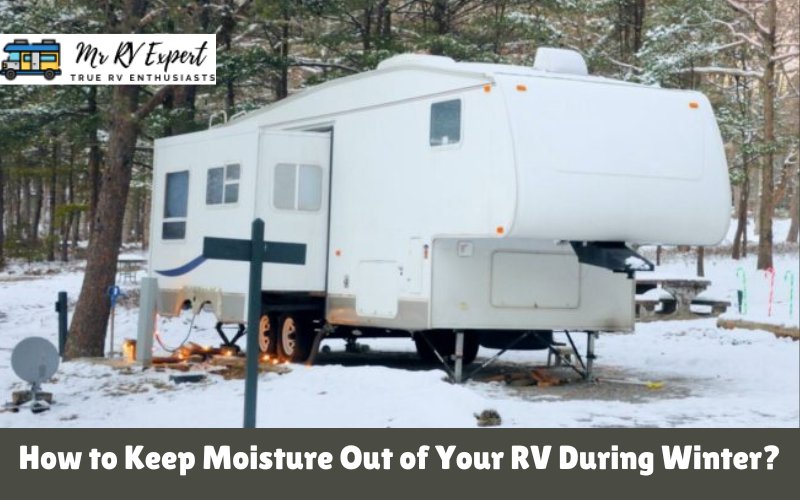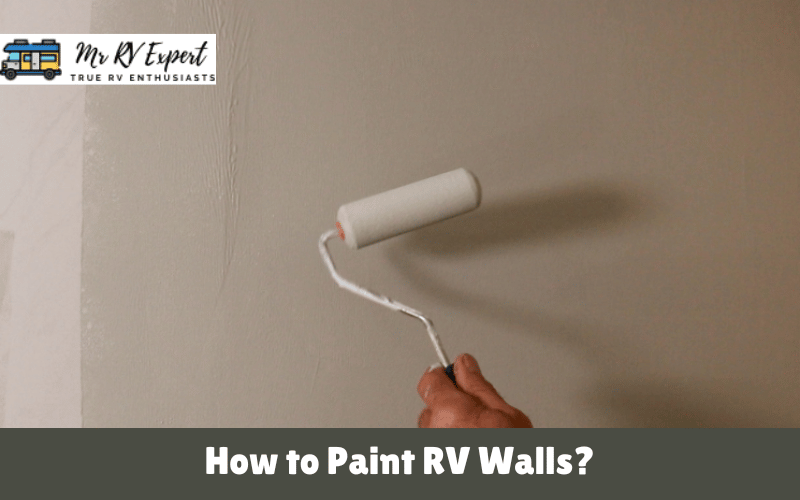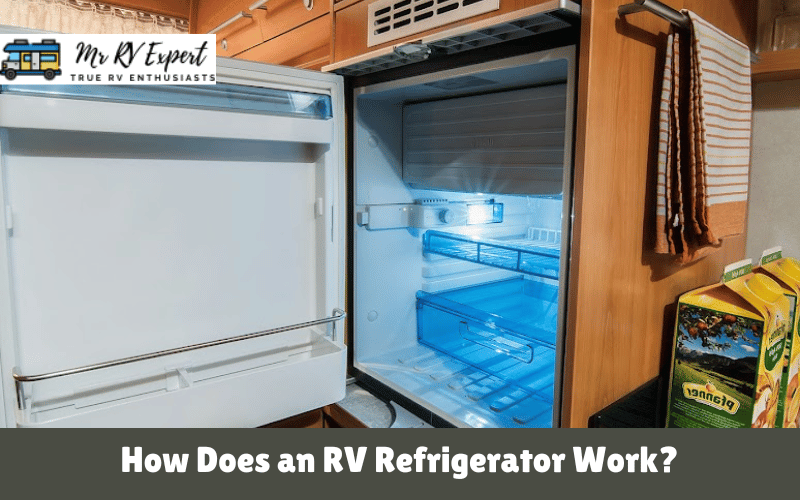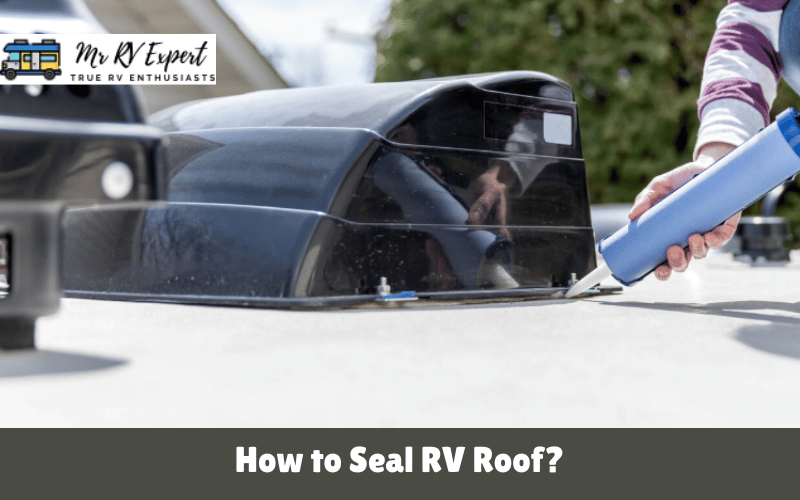As the weather turns colder and winter approaches, RV owners know that it’s time to start thinking about protecting their vehicles from the harsh elements. One of the biggest concerns is moisture buildup, which can lead to mold, mildew, and other damage. In this article, we’ll explore some effective strategies for keeping moisture out of your RV during the winter months.
Table of Contents
Understanding Moisture Problems in Your RV
Before we dive into specific solutions, it’s important to understand why moisture is such a big problem for RVs. Simply put, these vehicles are not designed to withstand prolonged exposure to moisture. They’re constructed of materials like wood and fabric, which can absorb water and become damaged over time. And because RVs are often closed up for long periods, moisture can become trapped inside and cause a host of issues.
Common Causes of Moisture Buildup
There are several factors that can contribute to excess moisture in your RV. One of the most obvious is simply the weather: if it’s raining or snowing outside, moisture is going to find its way in. But there are other causes to be aware of as well. For example, cooking and showering can generate a lot of steam, which can lead to condensation on windows and walls. Damp clothes or towels can also contribute to moisture buildup.
Another common cause of moisture buildup is a lack of ventilation. When your RV is closed up tight, there’s nowhere for moisture to escape. This can be a particular problem in colder weather when you’re more likely to keep your windows and doors shut to keep the heat in.
Signs of Excess Moisture in Your RV
So how do you know if you have a moisture problem? There are several signs to watch out for. If you notice a musty smell, that’s a sure sign that mold or mildew is present. You might also see water spots on walls or ceilings, or notice that fabrics like curtains or upholstery are damp. In extreme cases, you might even see puddles of water inside your RV.
It’s important to note that moisture problems aren’t always visible. Mold and mildew can grow behind walls or under flooring, where you can’t see them. That’s why it’s important to be vigilant and take steps to prevent moisture buildup in the first place.
The Dangers of Ignoring Moisture Issues
If you ignore moisture problems in your RV, you’re asking for trouble. Mold and mildew can cause respiratory issues and other health problems, especially for people with allergies or asthma. Damage to your RV’s interior can be costly to repair, and can even make your vehicle uninhabitable. And if moisture leads to rot or corrosion, the structural integrity of your RV could be compromised.
But the dangers of moisture buildup go beyond just your RV. If you’re travelling with pets or children, they could be at risk of developing health problems from exposure to mould and mildew. And if you’re parked in a campground or RV park, moisture problems could spread to neighbouring RVs, causing a larger problem for the entire community.
Preventing Moisture Problems in Your RV
The good news is that there are steps you can take to prevent moisture buildup in your RV. One of the most important is to keep your RV well-ventilated. This means opening windows and doors whenever possible, and using exhaust fans when cooking or showering.
You should also be diligent about drying wet items like towels and clothes. Don’t leave them lying around inside your RV; instead, hang them up outside or use a clothesline if possible.
Another important step is to invest in a dehumidifier. These devices can help remove excess moisture from the air, preventing it from settling on surfaces and causing damage.
Finally, it’s important to inspect your RV regularly for signs of moisture buildup. Check for water spots, mold, and musty smells, and take action immediately if you notice any of these signs.
Preparing Your RV for Winter Storage
Now that you understand the importance of keeping moisture out of your RV, let’s talk about how to do it. The first step is to properly prepare your vehicle for winter storage. Here are some key tasks you should complete:
Cleaning and Drying Your RV
Before you park your RV for the winter, it’s important to give it a thorough cleaning. This includes washing the exterior to remove any dirt or grime, and cleaning the interior to get rid of any food particles or other debris that could attract pests. But the most important step is to dry out your RV as much as possible. Use a dehumidifier or open windows and vents to let in fresh air, and run your air conditioner to remove moisture from the air.
You should also consider removing any fabric cushions or rugs that could hold onto moisture and lead to mold growth. If you do keep them in your RV, make sure they are completely dry before storing them.
Inspecting for Leaks and Damage
Before you store your RV for the winter, you should also inspect it for any signs of damage or leaks. Check the roof, windows, and doors for cracks or gaps where moisture could get in, and seal any problem areas with caulk or other waterproof materials. You should also check your plumbing and electrical systems for leaks or other issues that could cause moisture buildup.
It’s important to note that even small leaks can lead to big problems over time, so don’t overlook any potential issues. If you’re not comfortable doing the inspection yourself, consider hiring a professional to do it for you.
Sealing and Insulating Your RV
Finally, consider adding extra insulation to your RV to help keep it warm and dry. This can include adding weatherstripping around doors and windows, installing thermal curtains or shades, and applying insulation to your RV’s walls and ceiling. The better insulated your RV is, the less likely moisture is to find its way in.
Another way to keep your RV warm during the winter is to use a space heater. However, it’s important to use caution when using these devices, as they can be a fire hazard if not used properly. Make sure to follow all manufacturer instructions and never leave a space heater unattended.
By following these steps, you can help ensure that your RV stays dry and protected during the winter months. With a little bit of effort, you can enjoy your RV for years to come.
Effective Moisture Control Methods
Once your RV is safely stored for the winter, it’s time to focus on keeping moisture out. Moisture can cause a host of problems, including mold growth, musty odors, and damage to your RV’s interior. Here are some effective strategies to keep your RV dry and comfortable:
Using Dehumidifiers and Moisture Absorbers
An RV dehumidifier is a great way to remove excess moisture from the air inside your RV. Simply plug it in and let it run, and it will extract water from the air and collect it in a reservoir. This is especially important in areas with high humidity, such as coastal regions or during rainy seasons. You can also use moisture absorbers like DampRid, which work by absorbing excess moisture from the air and trapping it in a disposable pouch. These can be placed in closets, cabinets, or other areas where moisture tends to accumulate.
Proper Ventilation Techniques
Another key strategy for moisture control is proper ventilation. Make sure your RV has plenty of windows and vents that can be opened to let in fresh air. This will help to circulate air and prevent moisture from building up. You can also install roof vents or fans that can help circulate air and keep moisture from accumulating. Be careful not to seal your RV up too tightly, as this can trap moisture inside and lead to problems.
Utilizing Desiccants and Damp Traps
Desiccants are substances that absorb moisture from the air, and they can be particularly effective in small, enclosed spaces like RVs. You can purchase desiccant packs that can be placed throughout your RV, or use products like silica gel packets. These can be placed in closets, cabinets, or other areas where moisture tends to accumulate. Damp traps work in a similar way, using a salt-based solution to absorb moisture from the air. These can be placed in areas where moisture tends to accumulate, such as under sinks or in bathrooms.
It’s important to remember that moisture control is an ongoing process. Even with these strategies in place, you may still need to periodically check for and address any moisture issues that arise. By taking proactive steps to keep your RV dry and comfortable, you can enjoy your travels without worrying about the damaging effects of moisture.
Maintaining a Dry RV Interior
Winter RVing can be a magical experience, but it also presents some unique challenges. One of the most important things to keep in mind during the winter months is the importance of maintaining a dry and moisture-free interior. Excess moisture can lead to mold and mildew growth, which can be both unsightly and unhealthy. Here are some tips for keeping your RV’s interior in tip-top shape this winter.
Regularly Checking for Moisture
One of the best ways to prevent moisture buildup in your RV is to stay vigilant. Make it a habit to check the interior of your RV regularly for signs of moisture buildup. This includes checking windows and walls for condensation and inspecting fabrics for dampness. If you notice any issues, take immediate action to address them. This could include using a dehumidifier or opening windows to increase ventilation.
Keeping Your RV’s Interior Dry and Warm
Another key to preventing moisture buildup is to keep your RV’s interior warm and dry. This means using your heater as needed and making sure your RV’s insulation is up to par. You can also use space heaters or electric blankets to keep specific areas of your RV warm and cozy. Just be sure to follow all manufacturer instructions and safety guidelines when using these items.
Another way to keep your RV’s interior dry is to invest in moisture-absorbing products, such as DampRid or silica gel packets. These products can help to absorb excess moisture and prevent mold and mildew growth.
Addressing Condensation Issues
If you’re noticing a lot of condensation on your RV’s windows or walls, there are a few things you can do. First, make sure you have adequate ventilation so that humidity has a way to escape. You can also use a squeegee or towel to wipe down windows and walls when you notice condensation forming. Another option is to use insulating window film, which can help to reduce condensation and improve energy efficiency.
Finally, it’s important to remember that prevention is key when it comes to maintaining a dry RV interior. By staying vigilant, keeping your RV warm and dry, and addressing any moisture issues as soon as they arise, you can enjoy a comfortable and healthy RVing experience all winter long.
Conclusion
Moisture buildup is a serious issue for RV owners, especially during the winter months. But with the right strategies and tools, you can keep your RV dry and protected. By properly preparing your vehicle for winter storage, utilizing dehumidifiers and moisture absorbers, and staying vigilant throughout the winter, you can keep moisture at bay and enjoy your RV all season long.









